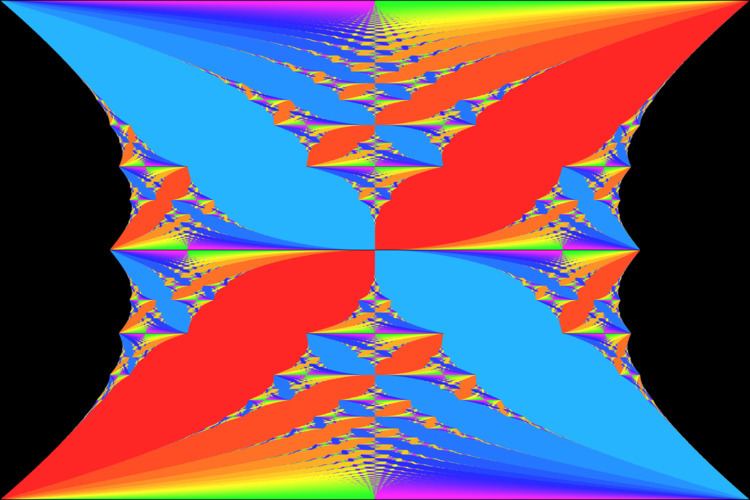In mathematical physics, the almost Mathieu operator arises in the study of the quantum Hall effect. It is given by
[ H ω λ , α u ] ( n ) = u ( n + 1 ) + u ( n − 1 ) + 2 λ cos ( 2 π ( ω + n α ) ) u ( n ) , acting as a self-adjoint operator on the Hilbert space ℓ 2 ( Z ) . Here α , ω ∈ T , λ > 0 are parameters. In pure mathematics, its importance comes from the fact of being one of the best-understood examples of an ergodic Schrödinger operator. For example, three problems (now all solved) of Barry Simon's fifteen problems about Schrödinger operators "for the twenty-first century" featured the almost Mathieu operator.
For λ = 1 , the almost Mathieu operator is sometimes called Harper's equation.
If α is a rational number, then H ω λ , α is a periodic operator and by Floquet theory its spectrum is purely absolutely continuous.
Now to the case when α is irrational. Since the transformation ω ↦ ω + α is minimal, it follows that the spectrum of H ω λ , α does not depend on ω . On the other hand, by ergodicity, the supports of absolutely continuous, singular continuous, and pure point parts of the spectrum are almost surely independent of ω . It is now known, that
For 0 < λ < 1 , H ω λ , α has surely purely absolutely continuous spectrum. (This was one of Simon's problems.)For λ = 1 , H ω λ , α has almost surely purely singular continuous spectrum. (It is not known whether eigenvalues can exist for exceptional parameters.)For λ > 1 , H ω λ , α has almost surely pure point spectrum and exhibits Anderson localization. (It is known that almost surely can not be replaced by surely.)That the spectral measures are singular when λ ≥ 1 follows (through the work of Last and Simon) from the lower bound on the Lyapunov exponent γ ( E ) given by
γ ( E ) ≥ max { 0 , log ( λ ) } . This lower bound was proved independently by Avron, Simon and Michael Herman, after an earlier almost rigorous argument of Aubry and André. In fact, when E belongs to the spectrum, the inequality becomes an equality (the Aubry-André formula), proved by Jean Bourgain and Svetlana Jitomirskaya.
Another striking characteristic of the almost Mathieu operator is that its spectrum is a Cantor set for all irrational α and λ > 0 . This was shown by Avila and Jitomirskaya solving the by-then famous "ten martini problem" (also one of Simon's problems) after several earlier results (including generically and almost surely with respect to the parameters).
Furthermore, the Lebesgue measure of the spectrum of the almost Mathieu operator is known to be
L e b ( σ ( H ω λ , α ) ) = | 4 − 4 λ | for all λ > 0 . For λ = 1 this means that the spectrum has zero measure (this was first proposed by Douglas Hofstadter and later became one of Simon's problems). For λ ≠ 1 , the formula was discovered numerically by Aubry and André and proved by Jitomirskaya and Krasovsky.
The study of the spectrum for λ = 1 leads to the Hofstadter's butterfly, where the spectrum is shown as a set.

